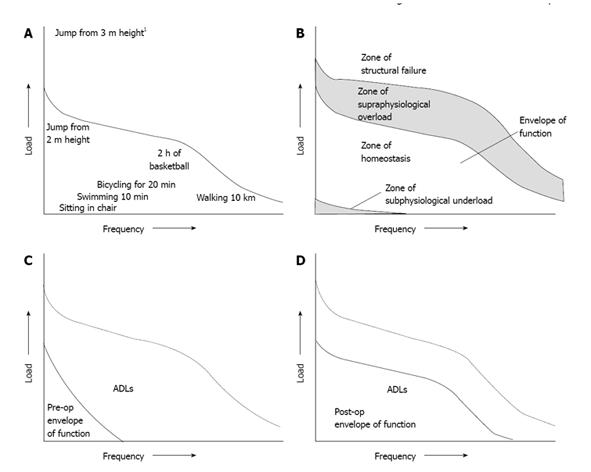Copyright
©2014 Baishideng Publishing Group Inc.
World J Orthop. Jul 18, 2014; 5(3): 163-170
Published online Jul 18, 2014. doi: 10.5312/wjo.v5.i3.163
Published online Jul 18, 2014. doi: 10.5312/wjo.v5.i3.163
Figure 1 Applying Dye’s theory to patients with Anterior Knee Pain after total knee arthroplasty provides useful insights.
A: The potential range of activity or envelope of function for a specific joint: all activities fall within the zone of homeostasis except the jump from 3 m height1; B: The different zones of loading across the knee joint. The first zone is the zone of subphysiological underloading, the second is the preferred zone of tissue homeostasis, the third is the zone of supraphysiological overloading and the fourth is the zone of structural failure; C: Arthritis causes the potential range of activity (envelope of function) to become limited, causing pain and restrictions in daily activities such as walking and cycling. The dotted line is the original zone of homeostasis for this specific knee; D: The postoperative situation where total knee arthroplasty placement increases the potential range of activity but does not return it to the original range of activity. (Reprinted with permission from Dye et al[6]).
- Citation: Breugem SJM, Haverkamp D. Anterior knee pain after a total knee arthroplasty: What can cause this pain? World J Orthop 2014; 5(3): 163-170
- URL: https://www.wjgnet.com/2218-5836/full/v5/i3/163.htm
- DOI: https://dx.doi.org/10.5312/wjo.v5.i3.163









